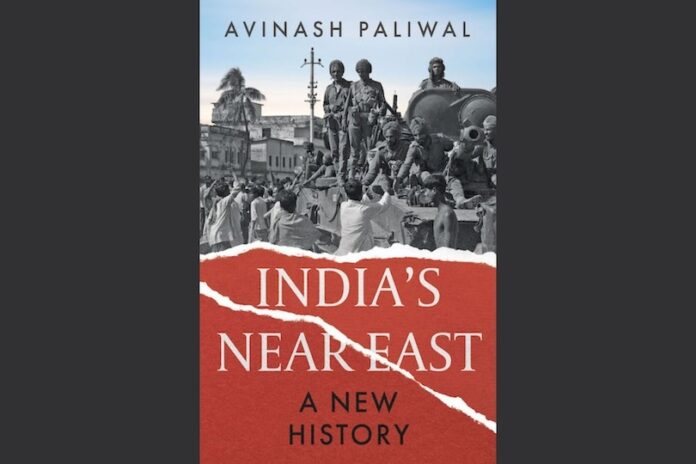India’s Near East: A New History
By Avinash Paliwal
Hurst, 2024
The abrupt downfall of the Sheikh Hasina government in Bangladesh on 5 August provoked a range of emotions in India, from surprise to anger to concern. However, a crucial missing element in the discussions is a deep reflection on India’s approach to its neighboring policy, particularly towards its troubled eastern frontier. Avinash Paliwal’s latest book, India’s Near East, steps in to address this gap by delving into India’s near east policy in terms of safeguarding its territorial boundaries, protecting Hindu minorities, and managing ethnic conflicts in its vicinity – issues that have been of significant concern to the Indian intelligentsia and establishment in the post-Hasina era. Through a descriptive narrative rather than a prescriptive one, the book provides insights into India’s challenges and experiences in its near east over seven decades.
The book is structured into three sections and ten chapters, each examining India’s evolving approach to its near east – solidarity, security, and connectivity – in a chronological manner. The solidarity section looks at the period from 1947 to 1970, exploring how India navigated the aftermath of partition and emerging ethnic insurgencies in its near east. The security segment delves into the years between 1971 and 1990, covering significant events such as the Bangladesh liberation war, the assassinations of leaders like Sheikh Mujib and Zia Ur Rahman, and India’s backing of pro-democracy factions in Myanmar. The final part, connectivity, spans from 1990 to 2024, outlining how India adjusted its near east policy in response to new economic realities and the fall of the Soviet Union.
A key strength of the book lies in its ability to maintain the central argument that India’s diplomacy with its near east – encompassing East Pakistan, Bangladesh, and Myanmar – is interlinked with its state-building efforts in the northeast, forming a cohesive thread throughout the text. This allows readers to draw connections to contemporary events, such as India’s nuanced engagement with the military junta post-2021 coup or its delicate balancing act with Bangladesh over the Citizenship Amendment Act. By adopting a historical analytical framework, the book sheds light on complex issues like Myanmar’s treatment of Rohingya Muslims and India’s use of AFSPA in the northeast.
By meticulously utilizing archival sources and interviews with key figures, the author uncovers intriguing episodes, such as India’s intelligence cooperation with Pakistan to counter communism in Burma and its readiness to intervene in Bangladesh following the 2009 BDR mutiny. The book challenges existing narratives, including Nehru’s pragmatism in handling secessionist movements and India’s response to the 1954 East Pakistan elections, revealing new avenues for research and understanding India’s eventual intervention in 1971.
Furthermore, the book addresses India’s “two and a half front” security challenge, illustrating how this dilemma has shaped India’s near east policy. As India grapples with security concerns vis-a-vis Pakistan and China, the author’s historical perspective on these issues becomes highly relevant.
Despite its strengths, the book exposes India’s historical struggles in maintaining a consistent posture towards its eastern neighbors, offering valuable lessons for scholars grappling with New Delhi’s complex relationships in the region. The analysis also highlights India’s oscillation between realism and liberalism in its regional engagements due to concerns about its periphery and external influences like China and the United States.
However, the book’s contemporary relevance is also its weakness, as the author’s focus on external factors overlooks the role of communal policies in shaping India’s responses, particularly in relation to Pakistan. Understanding communal and ethnic dynamics in South Asia is crucial, and a comprehensive analysis must consider colonial legacies and regional complexities. Additionally, the book’s emphasis on regional dynamics could benefit from a broader examination of global power shifts post-Cold War.
India’s near east is a neglected area in Indian scholarship, overshadowed by a Western-centric orientation that emphasizes Pakistan’s significance. This lack of research limits India’s understanding of its eastern neighbors and impedes a nuanced grasp of regional dynamics. By offering diverse narratives from India’s Near East, the book contributes significantly to scholarship on South Asia and underscores the need for a more comprehensive approach to understanding India’s regional challenges.




